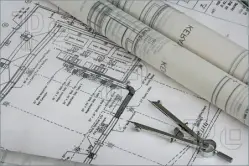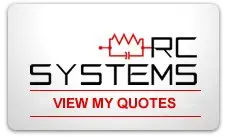Click image to enlarge
Where Should Gas Detectors Be Placed?
A big question for plant safety is, where to locate the gas detectors and how many detectors need to be used? Unfortunately, no single guideline may be applied to all the different industrial applications. However, asking these questions can help you make wise decisions.
Why is a gas detection system needed?
Gas detection systems are important for leakage monitoring, area monitoring, and personnel protection.Leakage Monitoring
A detector must be installed as close as possible to each potential leakage point (flanges, valves, pressure reducers, pumps, etc.), in order to facilitate leakage detection as early as possible.Area Monitoring
If there is no clear potential leakage source (e.g., solvent/paint warehouse), detectors should be distributed evenly throughout the hazardous area taking flow conditions into account (e.g., type of ventilation system). According to the type of hazard and hazard risk assessment, one detector is used to cover an area of 300 to 500 square feet.
Personnel Protection (for toxic gases)
For areas where there is no clear potential leakage source (e.g., laboratory workplace), the detectors should be placed in the inhalation area (head height) of the workplace.
What are the environmental conditions?
If the area exceeds the environmental specifications of the gas detectors, such as temperature, pressure, or humidity, sampling systems may be required to draw the gas into a place where the detector’s specifications are complied with.
What is the flow direction and velocity?
Locate the gas detector in a direction against the gas flow direction, and make sure gas velocity doesn’t exceed 20ft/s, especially for catalytic bead sensors.
Is vibration/shock or other mechanical protection needed?
Detectors should be installed in places with low vibration, where mechanical shocks are not to be expected. Some environments may also require protection cages around the detectors.
Are there any Electromagnetic Interference (EMI) sources?
Generally, grounded and shielded interconnecting cables and enclosures provide sufficient protection against EMI. Cable shields should be grounded only at one point on the controller end of the cable unless specified otherwise. Detector locations and cable routing should be kept away from high EMI sources (high voltage equipment, inductive loads, fluorescent lamps, pulse signal lines, etc.)
What type of gas is monitored?
Gas detection systems can monitor a wide variety of gases, such as flammable, toxic, and liquefied.Flammable Gases
Many gases, such as Hydrogen, Methane, and Ammonia, are much lighter than air. Therefore, detectors must be located above potential leak sources and in-ceiling areas where gas might accumulate. Other flammable gases (propane, butane, etc.) and vapors (methanol, toluene, etc.) are heavier than air and capable of flowing across the ground and covering wide areas. For early detection, the detector’s sensor head should be installed as low as possible; especially if there is no forced ventilation system influencing the natural gas/vapor movement determined by density.
Toxic gases
In low concentrations, toxic gases are considered to have the same density as air and spread by diffusion and convection similarly to air. Since toxic gas detectors are for personnel protection, their installation is normally at breathing levels. However, if the temperature of a leaking toxic gas exceeds ambient air’s temperature, the toxic gas will rise. Therefore, in these cases, the detectors should be located above potential leak sources.
Liquefied Gases
While leaking in their liquid forms, toxic compounds can flow downwards and spread into the lowest areas. The detectors should be installed at low levels (1 to 3 feet) above ground level.
Do you need some assistance?
Please contact R.C. Systems professional team to support you!



